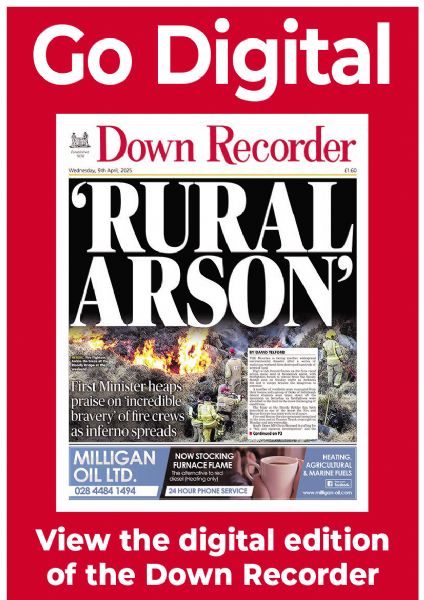Water levels as summer heatwave bites
Water levels as summer heatwave bites
11 July 2018
AS the hose pipe ban continues amidst the stifling heatwave, new images have emerged of the ping water level at the Spelga Dam reservoir in the heart of the Mournes.
The latest images show in greater detail an old bridge, which is in remarkably good condition, despite being under several feet of water for decades, while part of an old road is now clearly visible and is being used by visitors walking in the area.
With little prospect of the amount of rain required to replenish NI Water stocks due any time soon, the company has confirmed that while there has been a little improvement in the situation which led to the hose pipe ban being introduced, demand for water remains 20% above normal levels.
NI Water’s chief executive, Sara Venning, said while the situation has eased slightly due to
a combination of the good will of the public and the hard work of dedicated staff, demand for water remains high.
“When the hosepipe ban was introduced on June 29, we appealed to the public to assist us in managing an exceptional situation,” she explained. “I am delighted but not surprised to say that they have done so and we are now in a position where demand, whilst still at high levels, is reducing.”
Ms Venning said the dedication of NI Water staff, whom she commended for working tirelessly, has also greatly added to this progress.
“None of us can afford to be complacent and the hosepipe ban is still necessary. As we face into a period of extended dry weather, it is essential we all look at adopting water saving habits as part of our day to day lives now and in the future.”
The last hose pipe ban was introduced almost 25 years ago and applies to domestic consumers only with NI Water confirming its engineers are working round the clock to ensure there is no interruption to supply.
The company’s water treatment operators are also working flat out with plants manned on a 24-hour basis.
NI Water estimates that 700 million litres of water are being put into the network, around 25% more than usual. It says there is plenty of untreated water, but the problem is that customers are using it faster than it can be treated.


